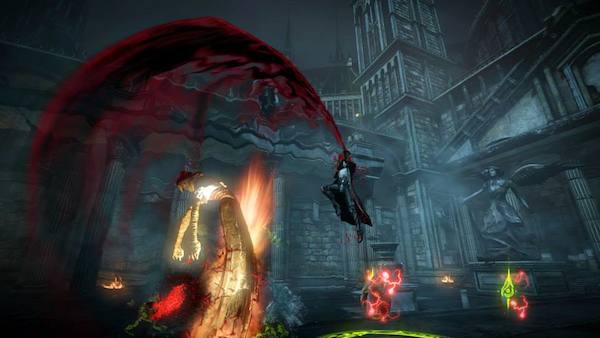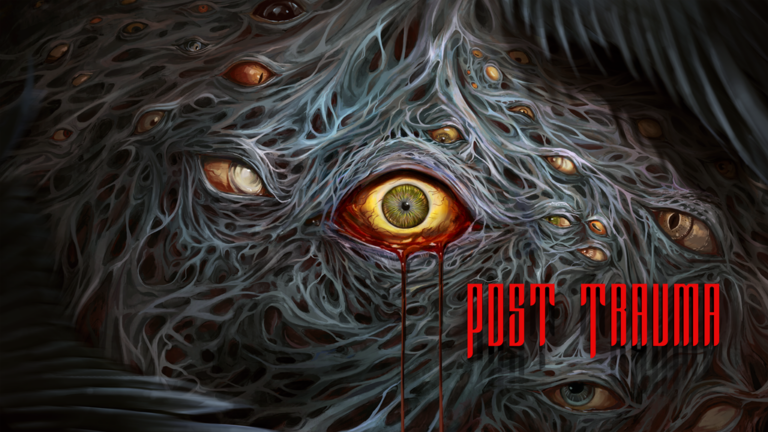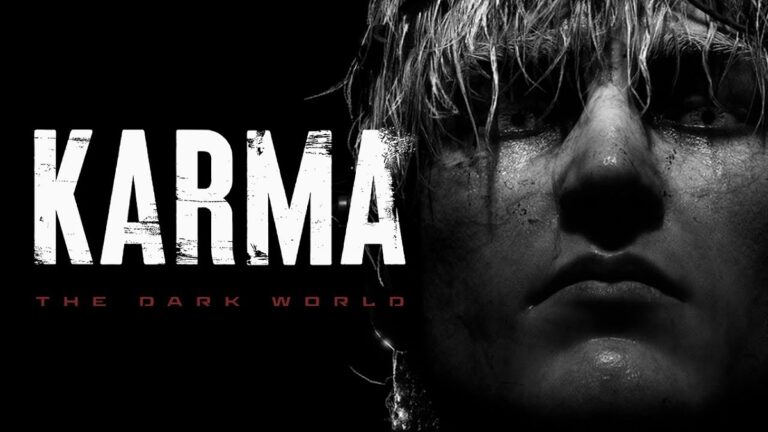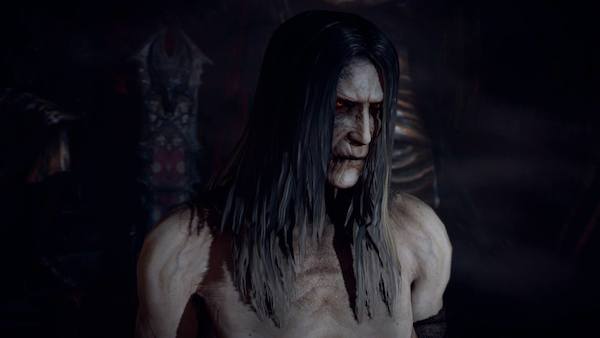
After I saw Castlevania: Lords of shadow’s epilogue I started to go down a path full of theories and complex storylines in my head. Dracula in modern times? 1999? Julius Belmont? Demon Castle War? Those were all questions that were bouncing around in my mind for months. I was really excited about the potential of having this previously unexplored chapter of the series’ lore finally realized in this new universe. Then Mirror of Fate came out and the picture started to become a little more clear in this “Marvel’s Ultimate” version of the Castlevania timeline. Now, Castlevania: Lords of Shadow 2 is available, a little more than three years after viewing that insane and truly memorable epilogue. Is it a worthy conclusion to the Lords of Shadow saga? Yes. Yes it is, though it’s not without some issues.
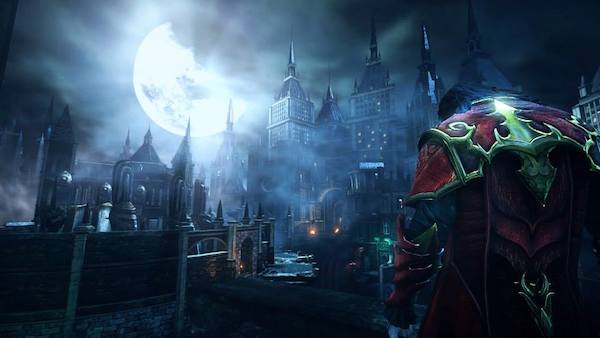
Castlevania: Lords of Shadow 2 puts players in the role of Gabriel Belmont once again, now full-time Dracula. And by full-time I mean centuries. Before waking up 1000 years after the end of the first game and being tasked by Zobek to help prevent Satan’s return to Earth, in a deal to rid him of his immortality, we see Dracula in his throne room being visited by some unexpected visitors. The Brotherhood of Light has sent an army right to Dracula’s doorstep in an effort to finally defeat him and bring him down with his entire castle. This makes for a very intense and satisfying opening scene as players get accustomed to Dracula’s abilities and go up against waves of knights before engaging in a fight with the leader that leads to an exhilarating sequence atop a giant mechanical monstrosity. As far as this genre goes, for me, this intro surpasses the excellence of God of War 3’s opening scene with Kratos fighting Poseidon (and that, my friends, is the only time you’ll see me mention GOW here). And the best part about it is that it doesn’t slow down. The game is expertly paced throughout its 15-20 hour duration, without any slow moments that were found in the original game’s first few hours.
Sadly, the writing in the game doesn’t shine as much as it did in the rest of the trilogy, with more servings of cheese than before. There aren’t any Zobek (Patrick Stewart) – narrated chapter breaks, or any chapters breaks at all to speak of. Despite the more lighthearted nature of the plot, when compared to the first game’s or Mirror of Fate’s darker and more somber tone, it’s always moving ahead at a nice pace and will keep you hooked right until the final battle with Satan, which sadly left me wanting a little more. You can expect some twists, though I reckon some may see one in particular coming from the very beginning. Which doesn’t mean it fails, mind you. I’m sure that you’ll still find yourself cheering after it’s been revealed. And even moreso since it happens to be part of one of the best scenes in the entire trilogy. Robert Carlyle, Patrick Stewart, Richard Madden, Jason Isaacs, and all the other main actors nailed their roles, with the one weak link amongst the main faces being Victor Belmont’s character.
Victor serves the Julius type of role here, being the last remaining member of the Belmont family, or so he thinks…The problem with him is that his role is executed poorly. He serves a major purpose in the last half of the game, but his character just isn’t fleshed out all that well to justify his importance. And his dialogue does come off as a bit forced in spots. I was really disappointed with him, and he ended up being the biggest negative part of the game that irked me the most. But let’s get back to the good. Or rather, the outstanding.
Castlevania: Lords of Shadow 2 plays like a dream. Its combat is fluid and allows for many methods to take down your foes, as opposed to just utilizing the basic light/heavy attacks. Dracula’s main weapon, the Shadow Whip, by itself has a lot of great uses thanks to some satisfying and powerful combos you can master. But when you combine that with the Void Sword (which heals you with each strike) and the Chaos Claws (which deals extra damage and is able to break through shields), you end up with a combat system that is satisfying to seek mastery in. And speaking of mastery…The game utilizes a new mastery system to power up your weapons, where players are rewarded for using everything in their skill set. If you want to make the most of it, you can’t just fly by by using the same couple of moves over and over again. You’re encouraged to unlock and make the most out of every combo that’s available. Each weapon now has a skill tree, and mastering each one proves to be a lot of fun. It’s a system I really love and I found it fitting for Dracula. Because, come on, why wouldn’t you want to use all his different skills?
You can also utilize projectile weapons and relics. The projectiles come in the form of swarms of bats and daggers. The daggers also grant you enhanced abilities when using the Void Sword and Chaos Claws. The latter allows for explosive daggers, and the former give the daggers an ice property. Both versions greatly help with combat and traversal by opening up new paths and allowing you to deal extra damage to enemies or freeze them temporarily. The relics are also neat additions to Dracula’s repertoire. You have one that can slow down time with each strike, one that serves as a potion, another that gives you unlimited energy for your Void Sword and Chaos Claws for a limited time (where normally you would have to build up your focus meter by successfully hitting and dodging enemies), another that helps you find secrets, and the biggest one allowing Dracula to transform into a dragon. Much was advertised about Dracula’s dragon form, but I was let down by its omission from the actual story. That was a huge missed opportunity for what could’ve been an amazing aerial battle with Dracula in his beastly form against some gargantuan monster.
Aside from the relics, you’ll also come across many secrets scattered throughout the game. Pain Boxes are hidden that, after finding a certain amount of each, can increase your health and magic meters for your Void Sword and Chaos Claws. You can also find artifacts that when put together unlock various challenges. These are extremely fun and will definitely test your skills with the combat system. They can be accessed in the game’s item shop, which is run by the oh-so adorable Chupacabra. You can also find many notes left behind by Brotherhood of Light knights, some of which really provide neat little stories. You can also seek out pieces of information about the different locales you’ll visit in the game’s future setting, giving you a little history lesson about its significace. And about that future setting…
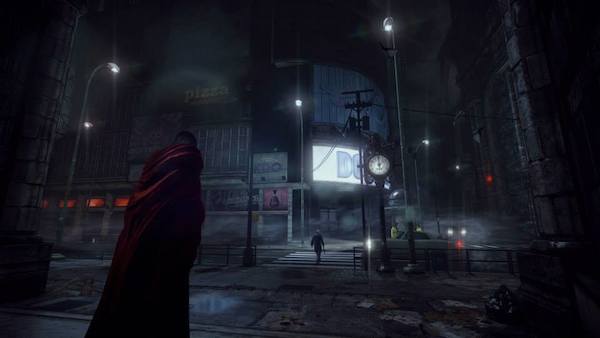
Castlevania and a future time period, it’s a match that fans were wary of at first. But Aria of Sorrow and Dawn of Sorrow went into the future to tell Soma’s tale, proving that it could work quite nicely. Now we’re once again in the future, in 2047 to be exact. Konami has stated that the future setting accounts for about 70% of the game, but I honestly felt like my experience was equally divided amongst both time periods. Perhaps that’s because I was so enamored by the castle in the “flashback” time period, that I ended up exploring it carefully. When you shift between time periods, the eerie atmosphere remains the same, thanks to the expertly designed gothic architecture that’s shared by both the titular castle and the city; a city that ended up being built around the remains of the castle itself.
You’ll feel right at home in the city, like it truly belongs in the series, but it doesn’t overcome the greatness of the actual castle. And what makes it even better is that the game heavily encourages and revolves around exploration, making this the first game in the series to successfully bring the Metroidvania formula to 3D life. Yeah, even though the developer has gone on record stating that they didn’t aim to make a Symphony of the Night style game. Past and future, the entire world is connected stupendously, with that classic feeling of “oh, I can’t get there yet!” after seeing areas that are just out of reach in your current state, with the now fully controllable camera. Towards the end of the game, once you have all the necessary abilities, you’re left with a large open-world (with both its time periods connected by wolf-medallion powered portals) that’s filled with many enemies to whip the holy hell out of and many secrets to find.
The enemies in the game are nicely designed and varied, with a trio of them serving as some of the creepiest I’ve ever encountered in a Castlevania game, delving into a form of Silent Hill territory. In the past time period we have Brotherhood knights and Dracula’s creatures of the night, turning on their master due to a plotpoint I won’t spoil here. In the future we have guards using mechs and demons all littering the streets of the city. What’s awesome is that sometimes you’ll even see both factions going up against each other, since the guards using the mech suits are actually trying to save the citizens from the demon infestation going on, with Dracula caught in the middle. You could definitely use this to your advantage, letting the demons weaken the heavily armored “good guys.” The bosses are of greater variety this time around as well, with many standouts like Medusa and the Toy Maker and one I won’t spoil but will definitely make you extremely happy. While some of the bosses do tower over Dracula, there aren’t any like the Titan battles from the first game. The bosses are memorable and can quickly change tactics on you, at times even evoking that signature brand of challenge felt by the series’ classic bosses. Some of them truly test your ability to use every weapon and move you have in your possession.
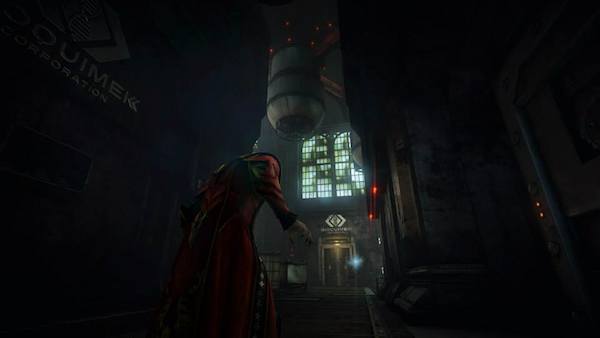
Oh, and “possession” is a weapon itself, in certain stealth-oriented segments. Overall, the stealth in the game is pretty solid (haha) and provides a great challenge to those accustomed to just hacking and slashing, though I’d be remiss if I didn’t say it could sometimes be annoying . Once you know how to proceed in these segments, they’re really fun. Sometimes sending swarms of bats is enough to distract guards long enough to move past them, other times you actually have to move in close behind them and possess them, in order to activate switches that only they have access to. And my favorite part of the stealth segments is the ability to transform into a rat when submerged in certain parts shrouded in complete darkness. Yes, Rat-ula. Taking on this cute little form lets you make your way through tight openings in a given area. These stealth segments will prove to be hit or miss with players, and the frustration it may sometimes lead to might diminish the experience for some. For those bothered by it, I can confirm that there isn’t an abundance of stealth at play. At least it makes actual sense with the plot and doesn’t feel entirely shoehorned in.
Like any good Castlevania game with a Metroidvania flavor, there’s more to do after seeing the credits roll for the first time. As aforementioned, you can seek out all the items hidden throughout to unlock challenges and upgrade Dracula. The world is quite large, and you can lose yourself just exploring every last bit of the castle or city once you have all your abilities. Even when I was still in the process of gaining all of Dracula’s powers, I still did everything I could. I was fully immersed in the game and it didn’t let go of its grasp on me. You could also tackle new game +, which is exactly what I did after beating it, bumping the difficulty up to the hardest setting. I know I’ll definitely be replaying the game a lot, though maybe not as much as Mirror of Fate.
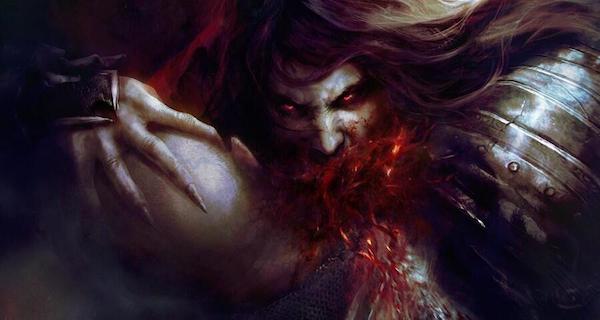
Castlevania: Lords of Shadow 2 is a great conclusion to the trilogy. It’s one of the finest and most substantial games in the genre. It houses some truly memorable moments that rank amongst the highest offered by the series, like a creative interactive telling of a character’s tragic origin, and a highly anticipated encounter with a certain beloved baddie. It also has a beautiful soundtrack that shows why Oscar Aruajo is one of the best in the business, with tunes that I’ve ended up placing right alongside the best the series has to offer.
The game ties everything together and leaves you wanting more. It’s funny because a certain character in the final scene actually expressed my feelings about the ending perfectly. It isn’t surprising to see trilogies end with the weakest of its entries, but in the case of the Lords of Shadow saga, this isn’t a bad thing at all. Mirror of Fate is still my favorite, and one of my absolute favorite games in the entire series, but Lords of Shadow 2 definitely lives up to the standard set by MercurySteam’s Castlevania offerings. It’s an amazing game that is a beautiful way to finish off a console generation filled with modern classics. I just had hoped for a more darker tale that really shows the true weight of a man seeking death, and an epic battle between the tragic character of Dracula and Satan himself.
I’m going to miss Gabriel Belmont. I’m going to miss this trilogy’s amazing tale that finally gave the series’ main villain a complex and tragic role. I’m going to miss MercurySteam being behind the series. One thing’s for certain: I can’t wait to see what they do next.
Contra?
 (8.5 / 10)
(8.5 / 10)
Great
 (8.5 / 10)
(8.5 / 10)
 JBoc924
JBoc924